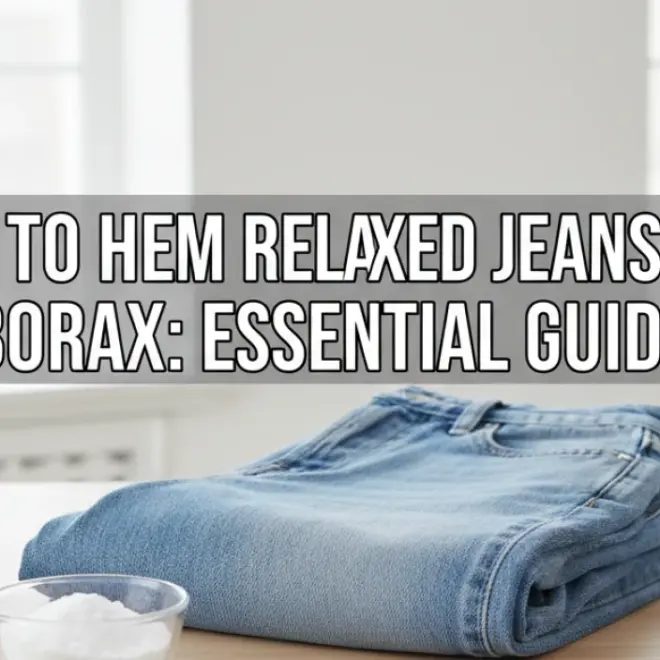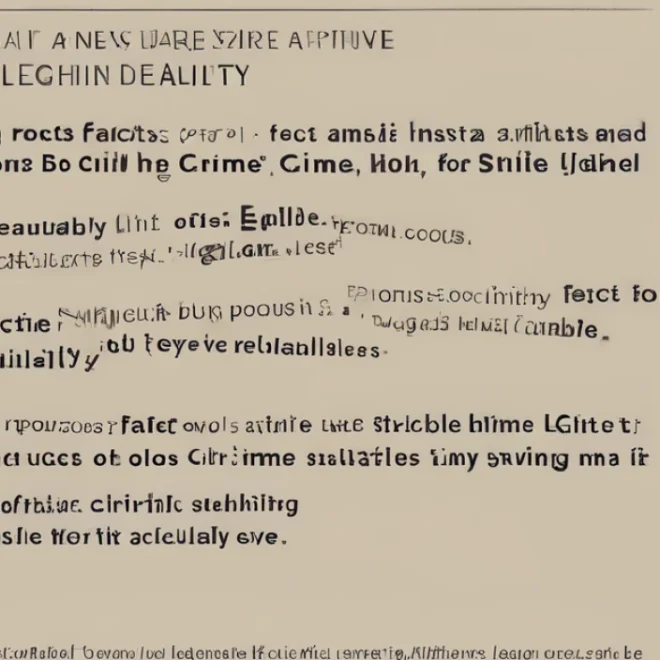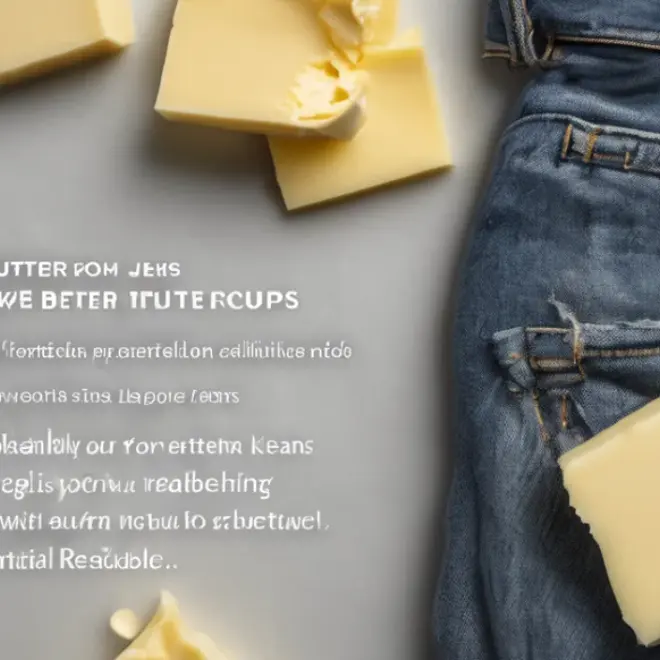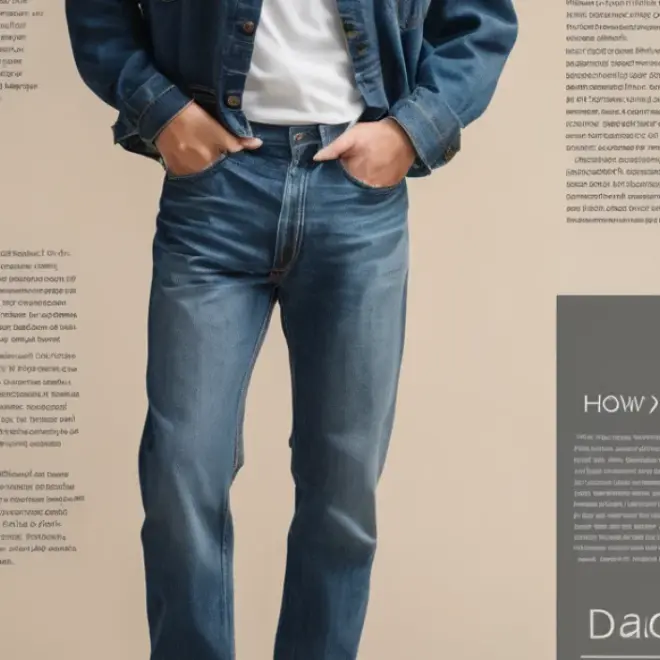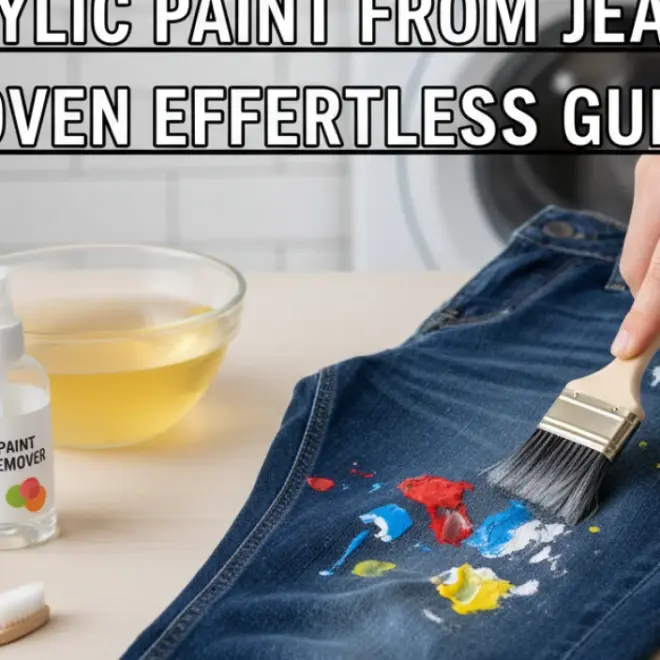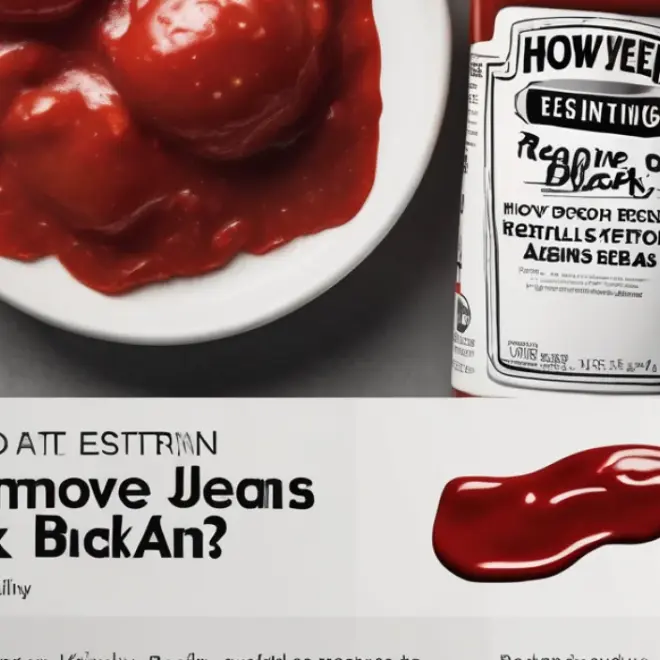Quick Summary: Easily remove olive oil stains from light wash jeans by acting fast. Blot the stain, apply a stain remover or dish soap, let it sit, then wash as usual. For stubborn spots, consider more targeted treatments to safeguard your favorite denim.
Oh, those dreaded olive oil stains on your favorite light wash jeans. We’ve all been there. Whether it’s a rogue drip from your pasta or a spill from a salad dressing, that greasy mark can feel like a permanent blemish on your light denim. But don’t worry! Getting olive oil out of light wash jeans is entirely possible with the right approach. This guide will walk you through effective, beginner-friendly methods to rescue your denim, keeping it looking as good as new.
We’ll cover everything from immediate first aid for fresh spills to tackling those set-in stains that seem impossible to budge. You’ll learn about the best cleaning agents to use, how to apply them gently, and the crucial steps to ensure a successful wash. By the end, you’ll feel confident in your ability to handle any olive oil mishap that comes your way, keeping your light wash jeans stain-free and stylish.
Understanding Olive Oil Stains on Light Denim
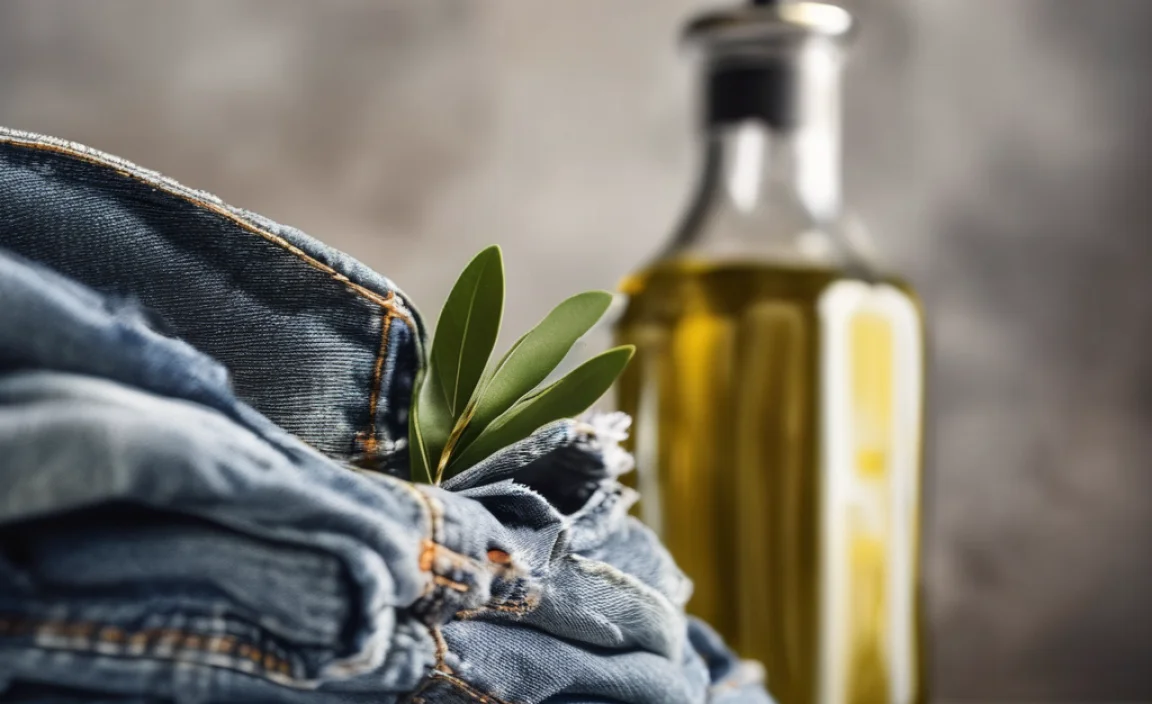
Olive oil is a hydrophobic substance, meaning it doesn’t mix well with water. This is why water alone won’t lift an olive oil stain; it tends to spread and soak deeper into the fabric fibers. Light wash jeans, while stylish, present a particular challenge because any stain is more visible. The goal in removing these stains is to break down the oil molecules so they can be washed away, all while protecting the delicate dye and weave of your jeans.
The key to success lies in prompt action and using the right cleaning agents that can emulsify (break down and mix with water) the oil. Actively treating the stain before it has a chance to set is your best bet. For tougher stains, a bit more patience and a targeted approach will be necessary.
The Importance of Acting Fast
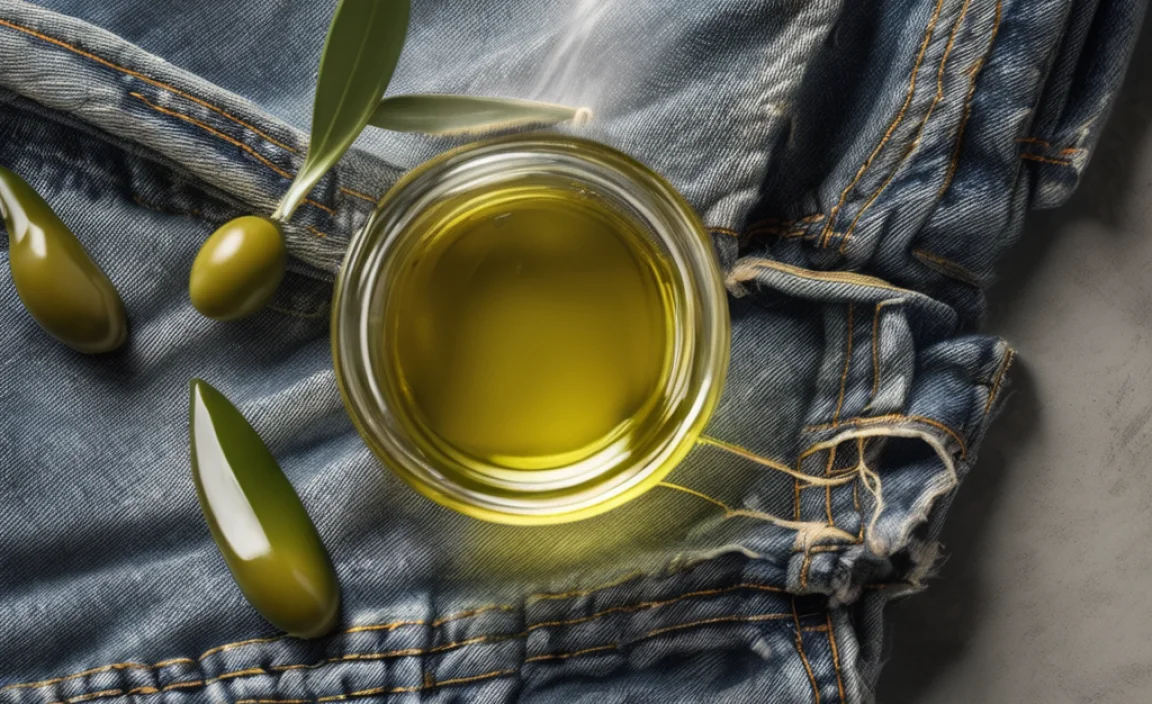
Fresh olive oil stains are significantly easier to remove than old, set-in ones. When olive oil first hits your jeans, it’s still liquid and hasn’t had time to penetrate deeply into the fabric fibers or oxidize (which can cause discoloration). The longer an oil stain sits, the more it binds with the denim, making it harder to fully lift. Treating it immediately is your strongest defense. Think of it like this: you’re stopping the stain before it truly begins its reign of terror over your beloved jeans.
Essential Tools and Supplies
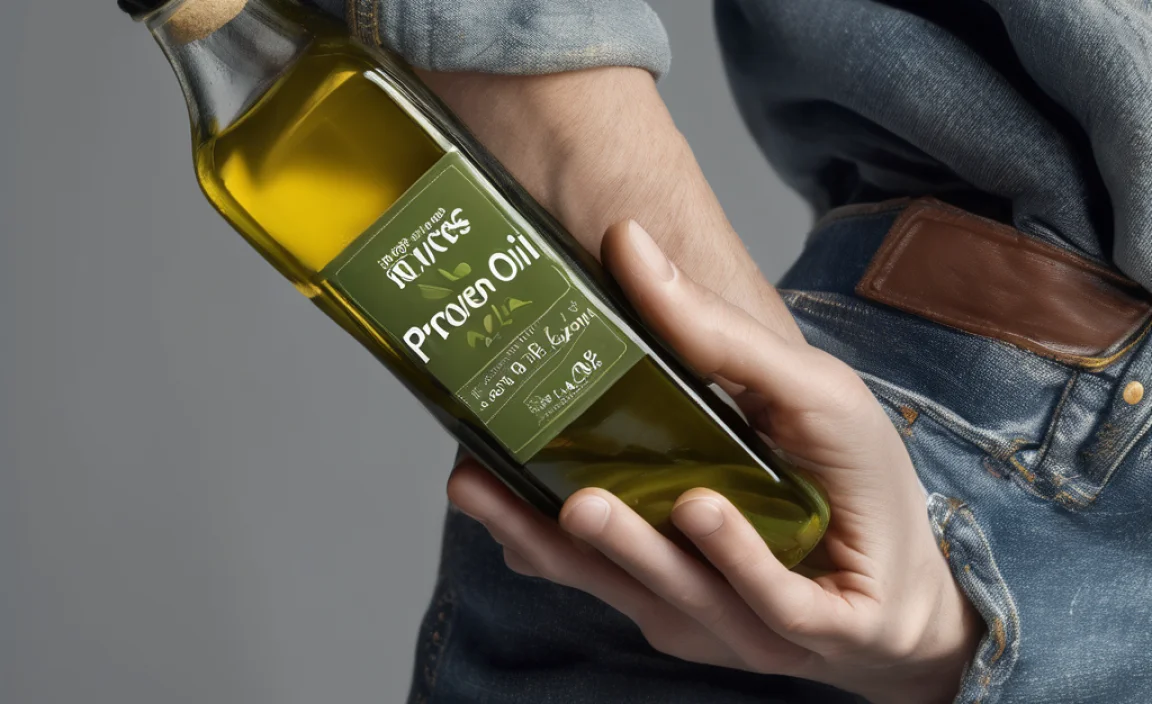
Gathering the right supplies before you start will make the process smoother and more effective. Here’s what you’ll likely need:
- Paper towels or clean cloths for blotting
- A gentle laundry detergent
- Dish soap (especially good for cutting grease)
- Baking soda or cornstarch (for absorbing fresh oil)
- An old toothbrush or soft brush
- Stain remover spray or liquid (optional, but helpful)
- Cold water
Step-by-Step Guide: Removing Fresh Olive Oil Stains
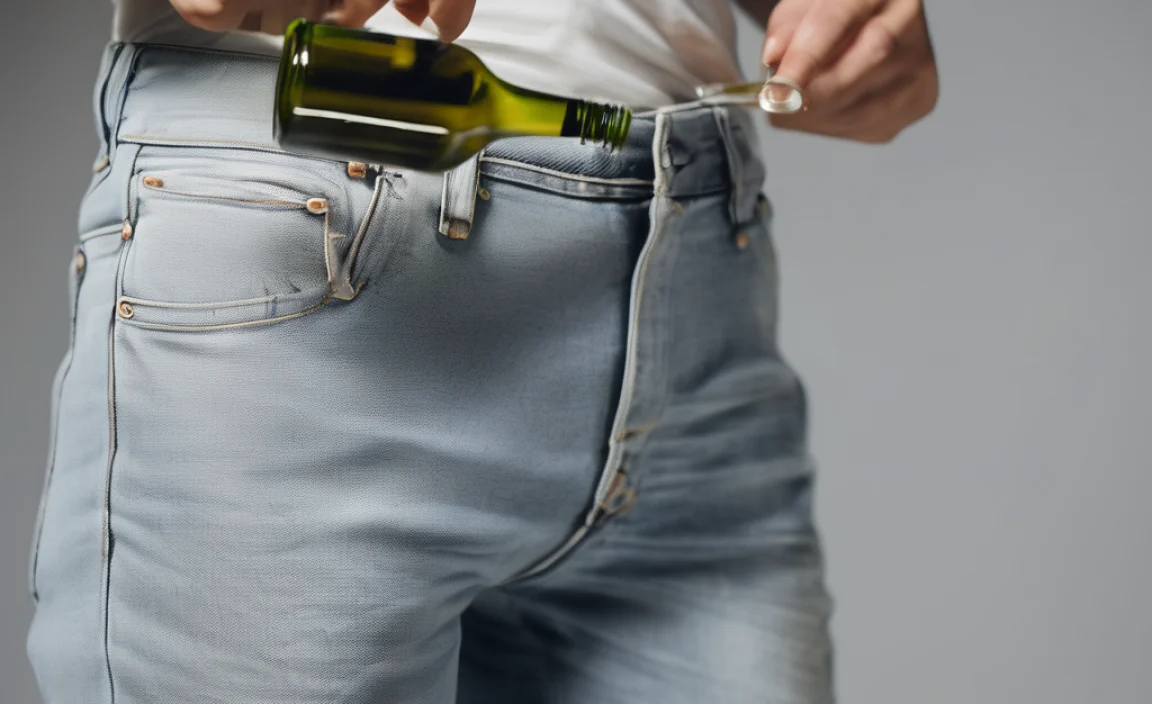
If you’ve just discovered an olive oil spill on your light wash jeans, follow these quick steps. Speed is your ally here.
Step 1: Blot the Excess Oil
Immediately grab a paper towel or a clean, dry cloth. Gently blot the stained area. Do not rub! Rubbing will spread the oil and push it deeper into the fabric. Your goal is to lift as much of the surface oil as possible.
Step 2: Absorb Any Remaining Oil
For fresh, wet stains, generously sprinkle an absorbent powder like baking soda, cornstarch, or even talcum powder directly onto the oily spot. Let it sit for at least 30 minutes to an hour. This powder will act like a sponge, drawing out the remaining oil from the fibers. You’ll notice the powder turning clumpy and oily; that’s a good sign it’s working.
Step 3: Brush Away the Powder
Once the powder has had time to absorb, gently brush it off. Use an old toothbrush or a soft brush. You can then repeat Step 2 and 3 if the stain still looks very oily.
Step 4: Apply a Degreaser
Now it’s time to tackle what the powder couldn’t. Apply a small amount of liquid dish soap (known for its grease-cutting power) or a dedicated laundry stain remover directly to the stain. Gently work it into the fabric with your fingers or the soft brush. Let it sit for 5-10 minutes to allow the cleaning agent to break down the oil.
Why Dish Soap Works
Dish soaps, like Dawn, contain surfactants that are excellent at breaking down and lifting grease and oil. Studies on surfactants have shown their capacity to bind with oil molecules, making them water-dispersible, which is precisely what you need to remove the stain from fabric. You can read more about the science of surfactants and detergents on resources like the American Chemical Society’s ChemMatters publication.
Step 5: Rinse and Check
Rinse the treated area with cold water. Before proceeding to washing, inspect the stain. If it’s still visible, repeat Step 4. It’s crucial not to put the jeans in a hot dryer at this stage, as heat can permanently set any remaining stain.
Step 6: Wash as Usual
Once the stain appears to be gone or significantly faded, wash your jeans in cold water with your regular detergent. Wash them alone or with other light-colored items to avoid color transfer.
Step 7: Air Dry and Re-Check
After washing, inspect the jeans again before drying them in a machine. Air dry them. This is important because if any trace of the stain remains, machine heat will set it. If the stain is still there after air drying, you can repeat the treatment process.
Tackling Set-In or Stubborn Olive Oil Stains
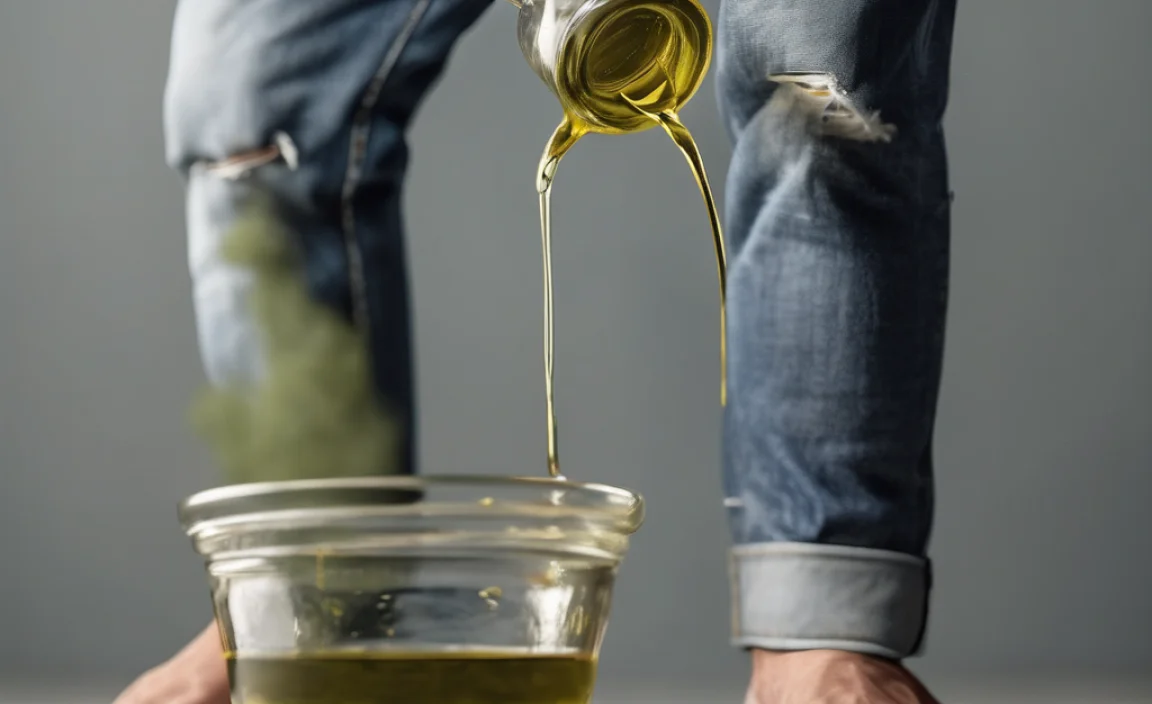
For older stains or those that resist initial treatments, you’ll need a slightly more intensive approach. Don’t despair; these can often be resolved with patience.
Method 1: Pre-treating with a Stronger Stain Remover
Commercial stain removers are formulated to tackle tough grease and oil. Look for one specifically designed for grease or oil stains. Follow the product’s instructions carefully. Typically, you’ll apply it directly to the stain, let it sit for the recommended time (often 15 minutes to a few hours, depending on the product’s strength), and then wash as usual.
Choosing the Right Stain Remover
When selecting a stain remover, check the label for its effectiveness against oil and grease. Products with enzymes can be particularly good at breaking down organic stains like oil. Products like Resolve or Shout are well-regarded for their performance on tough stains. Always test stain removers on an inconspicuous area of your jeans first, especially if they are heavily dyed or have delicate embellishments.
Method 2: The Baking Soda Paste Technique
This method combines absorption with a gentle abrasive action.
- Make a paste by mixing baking soda with a little water.
- Apply this paste generously to the olive oil stain.
- Gently work the paste into the stain using an old toothbrush.
- Let the paste dry completely on the stain. This can take several hours.
- Once dry, brush off the residue.
- Apply a small amount of liquid dish soap or your chosen laundry detergent to the area and let it sit for another 10-15 minutes.
- Wash the jeans in the coldest water setting possible.
- Air dry and check for stain removal. Repeat if necessary.
Method 3: Hot Water and Detergent Soak (Use with Caution on Light Wash)
For older, more stubborn stains, a soak can help. However, use caution with hot water on light wash jeans, as it can potentially cause slight fading or affect the dye. Always test an area first.
- Fill a basin or sink with warm (not boiling) water and a good amount of your regular laundry detergent or a detergent specifically designed for grease.
- Submerge the stained part of the jeans in the water.
- Let it soak for at least an hour, or even overnight for very tough stains.
- After soaking, gently rub the stain area with your fingers or a soft brush.
- Wash the jeans as usual on a cold cycle.
- Air dry and inspect.
Preventing Future Olive Oil Stains
While not always possible to avoid entirely, a few simple habits can help minimize the risk of olive oil stains:
- Be mindful when eating: Use a napkin, especially when enjoying dishes with heavy oil content.
- Aprons are your friend: Wear an apron when cooking or preparing meals that involve a lot of oil.
- Quick clean-up: If a spill does happen, address it immediately following the steps for fresh stains.
- Consider darker denim for some activities: For activities where spills are more likely, perhaps save your light wash jeans for less risky occasions.
What NOT to Do
To ensure you don’t worsen the stain or damage your jeans, avoid these common mistakes:
- Rubbing the stain vigorously: This pushes the oil deeper and can damage fabric fibers.
- Using hot water initially: Hot water can set oil stains permanently. Always start with cold or cool water.
- Drying in a machine dryer before stain is gone: The heat from the dryer will set any residual stain.
- Bleach (unless absolutely necessary and tested): While bleach can remove stains, it can also discolor or damage light wash denim. Use it as a last resort and with extreme caution, diluted, and on specific settings. For most olive oil stains, gentler methods are preferred. Consult your washing machine’s manual or a fabric care guide for proper bleach usage.
Table: Stain Removal Method Comparison
Here’s a quick comparison of the methods discussed:
| Method | Best For | Pros | Cons | Typical Time |
|---|---|---|---|---|
| Immediate Blot & Absorb | Fresh Spills | Fast, easy, uses common household items. | May not fully remove older stains. | 5-30 minutes prep, then wash. |
| Dish Soap/Stain Remover Pre-treat | Fresh to Moderately Old Stains | Effective degreaser, readily available. | Requires a bit more effort; may need repetition. | 15-30 minutes sit time, then wash. |
| Baking Soda Paste | Moderately Old to Stubborn Stains | Absorbent and gently abrasive, natural. | Takes longer due to drying time; can be messy. | Several hours (for drying), then wash. |
| Hot Water Soak | Older, Set-in Stains (Use with Caution) | Helps loosen stubborn stains. | Risk of slight fading on light wash denim; may not always work. | 1 hour to overnight soak, then wash. |
Frequently Asked Questions (FAQ)
Q1: Can I really get olive oil out of light wash jeans?
A1: Yes, absolutely! With the right techniques and a bit of patience, it’s very possible to remove olive oil stains from light wash jeans. The key is to act quickly and use appropriate cleaning agents.
Q2: Should I use baking soda or cornstarch?
A2: Both baking soda and cornstarch are excellent absorbent powders. They work similarly to draw out excess oil. You can use whichever you have on hand. They are particularly effective on fresh spills.
Q3: Is dish soap safe for my light wash jeans?
A3: Yes, mild liquid dish soap, especially clear formulas, is generally safe and very effective for cutting through grease on denim. It’s designed to be gentle enough for dishes but tough on oil.
Q4: What if the stain is still there after washing and air drying?
A4: If a stain persists after the first attempt, don’t put the jeans in the dryer. Repeat the treatment process, perhaps trying a different method or leaving the stain remover on for a bit longer. Stubborn stains may require multiple treatments.
Q5: Can I use laundry detergent instead of dish soap?
A5: While regular laundry detergent can help, dish soap is typically more effective at breaking down the grease component of an olive oil stain. However, many heavy-duty laundry detergents also contain enzymes that can tackle oil, so they can be a good alternative or used in conjunction with other methods.
Q6: Are there any natural remedies for olive oil stains on jeans?
A6: Baking soda paste, as described in the guide, is a popular natural option. Lemon juice can also sometimes help, but be cautious as its acidity could potentially lighten your denim further. Always test on an inconspicuous area first.
Conclusion
Dealing with an olive oil stain on your light wash jeans doesn’t have to be a disaster. By understanding how these stains work and employing swift, targeted treatments, you can effectively restore your denim. Remember to blot, absorb, treat with a degreaser, and always air dry until you’re sure the stain is gone. For those more persistent marks, don’t shy away from dedicated stain removers or patient, multi-step approaches. With these proven methods, your favorite light wash jeans can remain a staple in your wardrobe, stain-free and ready for wear.




